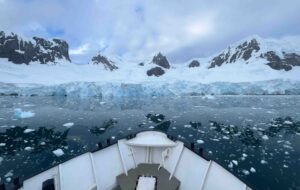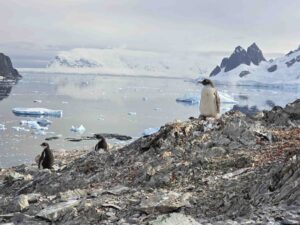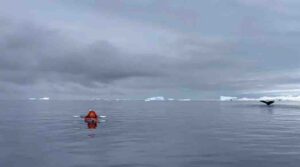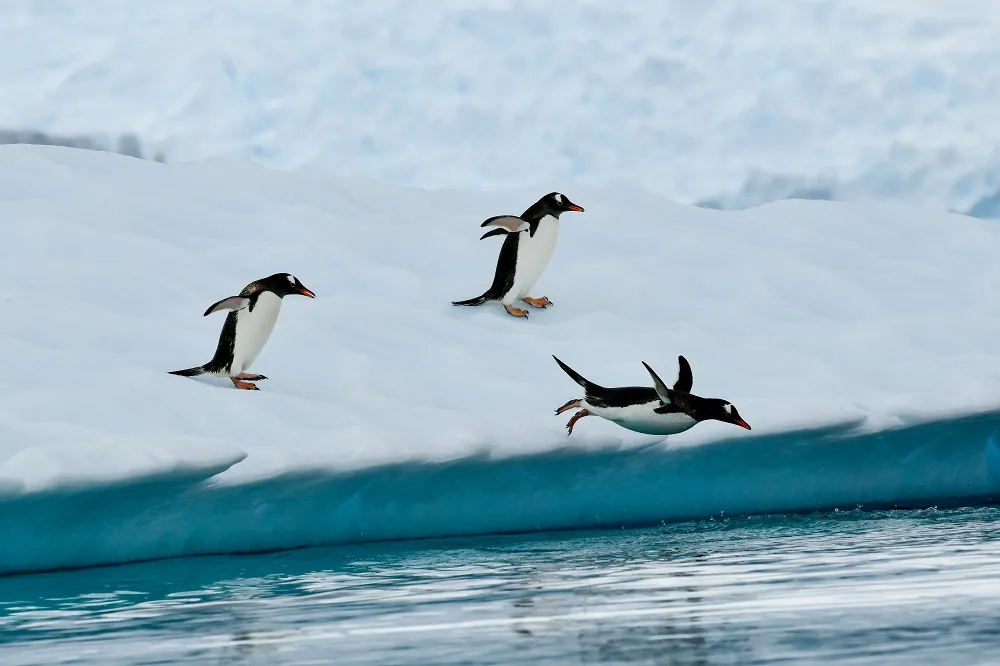What happens in the off season? Many many things, but one is to spread the word about the science that we help with in Antarctica and share the knowledge we learn with others. We hope our passengers become Antarctic Ambassadors and we help to build even more by educating as many as we can about the cool and VERY important science happening in Antarctica on our vessels.
The last week of April, Captain Fede and Expedition Leader Laura, traveled to Rio and gave a total of 6 talks while in Rio. They were welcomed by the American School in Rio (Escola Americana do Rio de Janeiro – EARJ). AT the Barra campus they spoke to all students and at the Gavea Campus they gave a presentation to the lower school and then a separate talk to the Middle Schoolers and High Schoolers.
At the British School in Rio, they spoke to the year 4 students. In the talks they highlighted the citizen science projects that Quixote Expeditions has been involved in – including microplastic water sampling (Adventure Scientists)and Phytoplankton sampling (Fjordphyto). During the microplastics discussion the students discussed the sources of microplastics and potential ways to cut down on plastics. When talking about phytoplankton, the students were introduced to the Antarctic Food Chain – starting with Phytoplankton, then going up to krill, and then focusing on just how many animals in Antarctica feed on Krill – Penguins, baleen whales, seals. and then talking about the animals on top – Orcas, leopard seals, and Skuas! Usually some interesting take home info on penguin poop color is thrown in for good measure!
Speaking to kids, especially younger kids is so invigorating. For all presentations to the younger children, the questions after the presentation could have gone on for over an hour – they are not restricted by what they should ask, or what they should know, but rather motivated by pure curiosity – how many eggs to penguins have, how big are they, what do you eat in Antarctica, how do the birds eat the penguins (or rather penguin eggs and chicks), how do penguins survive during their 2-3 week molt with no food…. the questions are just great, as is the enthusiasm!
Laura and Fede also made a visit to the US Consulate in Rio to explain all of the various ways they are involved in science – the citizen science programs and Guest Scientist Program. In addition to microplastics and phytoplankton, they explained how they provide a bunk on each trip for a guest scientists and explained some cool projects they had assisted in both Antarctica – a perennial favorite was a trip to Isla de los Estados, off the Eastern Entrance of the Beagle channel, where a group of scientists did a large survey of the island for insects and other “bugs”. The results was many new species!!!
Finally Fede and Laura gave an evening talk, hosted by the wonderful Consulate General and his wife to talk about the passenger experience down in Antarctica.
OH yes and Laura and Fede did a bit of site-seeing as well while “warming up their bones” in Rio – They visited the Christ Redeemer Statue on Corcovado Mountain, the Museum of Tomorrow, and of course lounged around on Leblon beach, next to Ipenema.













